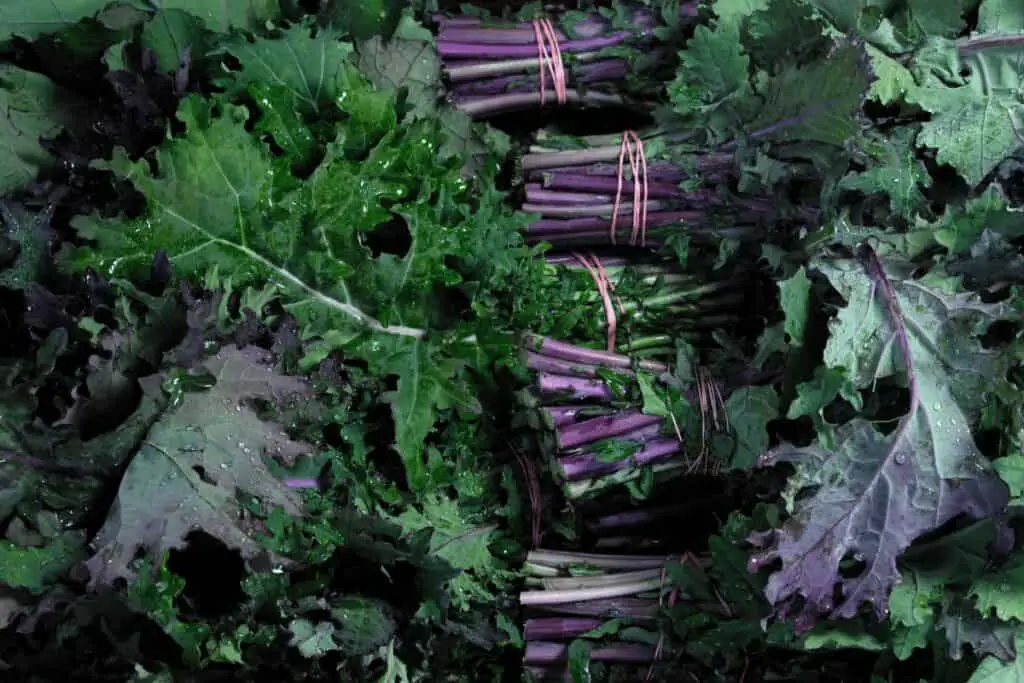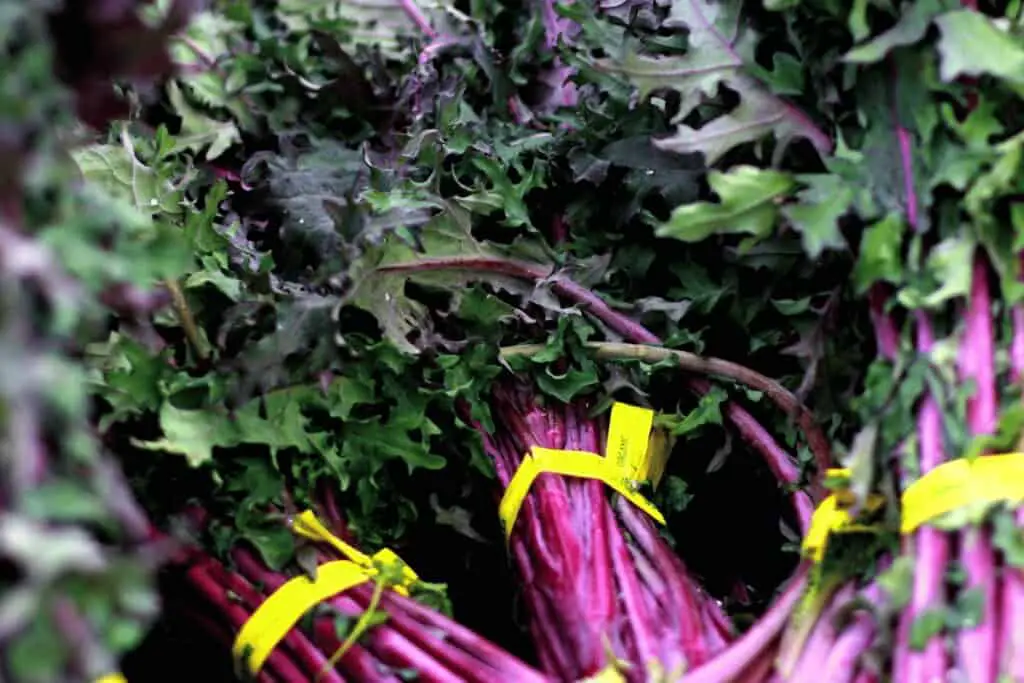Red Russian Kale is an attractive and nutritious addition to any garden. It is easy to grow and can be harvested throughout the growing season. However, to keep the plant growing, it’s essential to harvest it correctly. In this article, we will provide a step-by-step guide on how to harvest Russian Kale so it keeps growing. We will also provide some essential tips on how to care for your plant to ensure it remains healthy and productive.
Introduction
Russian Kale, also known as Red Russian Kale, is a member of the Brassica family and is a cold-hardy crop that can survive in colder temperatures than many other greens. It is a nutritious addition to any garden and is a great source of Vitamins A, C, and K. Red Russian Kale has a sweet flavor that is less bitter than other varieties of kale, making it perfect for salads, smoothies, and juices.
However, to keep your Red Russian Kale plant growing throughout the season, it’s essential to harvest it correctly. Here’s how:

Step-by-Step Guide on How to Harvest Red Russian Kale
- Harvest in the morning: To prevent wilting, harvest your Red Russian Kale early in the morning while it is still cool outside [1]. This helps to preserve the flavor and nutrients of the leaves.
- Remove leaves from the sun quickly: Once you have harvested your Red Russian Kale, make sure to take the leaves out of the sun quickly after you’ve collected them. The heat of the sun can cause the leaves to wilt and lose their flavor [1].
- Dunk leaves in cold water: To remove field heat imparted by the sun and to prevent wilting post-harvest, dunk the leaves in a tub of cold water. This helps to cool the leaves down and keep them fresh until you’re ready to use them [1].
- Use pruning shears: To harvest, grasp the leaf in one hand and simply snip off along the base near the stem using pruning shears [2]. This helps to prevent damage to the plant and encourages new growth.
- Don’t cut the root of the plant: No matter what, do not cut the root of the plant! Kale is programmed to continue to produce leaves for some time. However, if the root is cut, the plant will not be able to produce new leaves and will eventually die [2].
- Harvest mature leaves first: It’s important to harvest mature leaves first as they are the oldest and most likely to start to wilt. By harvesting the mature leaves first, you can encourage new growth from the younger leaves. This will help to keep your plant productive and healthy [3].
Tips for Caring for Red Russian Kale

Red Russian kale is a variety of kale that is known for its tender leaves and purple-pink veins. It is an easy crop to manage but may encounter some common problems like wilting leaves and yellow and thinning leaves. Here are some tips for caring for Red Russian Kale:
- Growing conditions: Red Russian Kale is hardy and can be grown in cold, cool, and warm outdoor temperatures. The best outdoor soil temperature to start growing this plant is 45°F [3]. It is best grown as a biennial crop with days to maturity ranging from 50-65 in spring/summer and 70-85 in fall/winter [3].
- Planting: Red Russian Kale can be started indoors or outdoors. It is best to start indoors and transplant once the seedlings are 2-3 inches tall [3]. It is recommended to plant kale in well-drained soil and in an area that receives at least six hours of sun daily [1].
- Watering: Kale needs consistent moisture, especially during hot and dry weather [1]. It is recommended to water deeply once a week and keep the soil moist but not waterlogged [2].
- Fertilizing: It is recommended to fertilize kale every 4-6 weeks with a nitrogen-rich fertilizer. Avoid fertilizing too much as it can lead to excessive leaf growth and poor flavor [1].
- Harvesting: Red Russian Kale can be harvested once the leaves are 8-10 inches long. To harvest, cut the leaves at the base of the stem, leaving the central bud intact [2].
In summary, to care for Red Russian Kale, provide it with well-drained soil, and consistent moisture, and fertilize it every 4-6 weeks. It can be grown as a biennial crop and is best harvested once the leaves are 8-10 inches long. Keep an eye out for common problems like wilting leaves and yellow and thinning leaves and manage them accordingly [1][2][3].
Kale Seed Red Russian

50 Seeds Kale Seed Red Russian Kale Seeds Fresh Seed Non-Hybrid, Open-Pollinated, Suited for Canadian Climate
- 100% NON-GMO
- Heirloom, and Non-GMO
- All of the seeds contained within this assortment are fresh
Kale Seeds

Winter Red Russian Organic Vegetable Seeds – 40 Seeds
Additional Tips
Yes, there are a few additional tips to keep in mind when harvesting Red Russian Kale so it keeps growing. Firstly, it is important to harvest the leaves from the bottom of the plant first and work your way up as the plant grows taller.
This will ensure that the plant continues to produce new leaves [1]. Secondly, do not cut the root of the plant as kale is programmed to continue to produce leaves for some time. Instead, snip the leaves off at the base near the stem using pruning shears [1].
Finally, for Red Russian kale, baby leaves are ready for harvest 25 days after sowing and full-sized leaves can typically be harvested after 50 days [2].
FAQS
How do you cut kale so it continues to grow?
To cut kale so it continues to grow, you need to use the right technique to avoid damaging the plant. The recommended way is to fold the leaves in half so the stem lies at one end of the fold, and then use a sharp knife to slice the leaves away from the stem in one swift movement [3]. You should avoid cutting too close to the crown, which is part of the plant where new leaves grow. If you cut too close to the crown, it can damage the plant and reduce its ability to continue growing. Instead, cut a few inches above the crown, leaving at least 2-3 sets of leaves on the plant. This will allow the plant to keep growing and produce more leaves for future harvests.
How do you harvest Russian red kale?
You can start harvesting the leaves when they are about the size of your palm [2]. If you direct seed the kale into your garden or container, the leaves will be ready to pick in 55 to 75 days [1]. Transplanting seedlings will give you a head start and cut down the time to harvest to about 30 to 40 days. When harvesting Russian red kale, make sure to cut the leaves a few inches above the crown, leaving at least 2-3 sets of leaves on the plant to promote continued growth.
Will kale grow back after cutting?
Yes, kale can grow back after cutting if you use the right technique. As mentioned earlier, when cutting kale, you should avoid cutting too close to the crown, leaving at least 2-3 sets of leaves on the plant to promote continued growth. With proper care, the plant will continue to produce new leaves that you can harvest [1].
How do you maintain kale harvest?
To maintain kale harvest, you need to ensure that the plant has the right growing conditions. Kale grows best in cool weather, so it is important to plant it in the right season. It also requires full sun or partial shade and moist, well-drained soil [1]. Additionally, make sure to water the plant regularly and fertilize it with a balanced fertilizer every 4-6 weeks. To promote continued growth, you should harvest the leaves frequently but avoid cutting too close to the crown.
How long can kale stay in the ground?
Kale can stay in the ground for several months, depending on the growing conditions and variety. It is a hardy plant that can tolerate frost and cold temperatures, making it a good option for fall and winter gardening. You can start harvesting kale leaves when they are about the size of your palm, and the plant will continue to produce new leaves for several months [1].
How do you store kale for long-term storage?
To store kale for long-term storage, you should first remove any damaged or wilted leaves and wash the remaining leaves thoroughly. Next, dry the leaves completely and place them in a plastic bag with a paper towel to absorb excess moisture. Seal the bag and store it in the refrigerator crisper drawer, where it can last for up to two weeks
Conclusion for How Do You Harvest Russian Kale so It Keeps Growing?
In conclusion, harvesting Russian kale is a simple process that requires a few basic steps. When harvesting, it is important to pick the leaves when they are about the size of your palm, which is typically around 50 days after planting.
It is recommended to use pruning shears to snip off the leaves at the base of the stem, making sure not to cut the root of the plant. By following these guidelines and harvesting regularly, Russian kale can continue to grow and produce leaves for an extended period of time.




